ECS KN1 Extreme AMD Athlon 64 Motherboard
KN1 Extreme Motherboard Layout
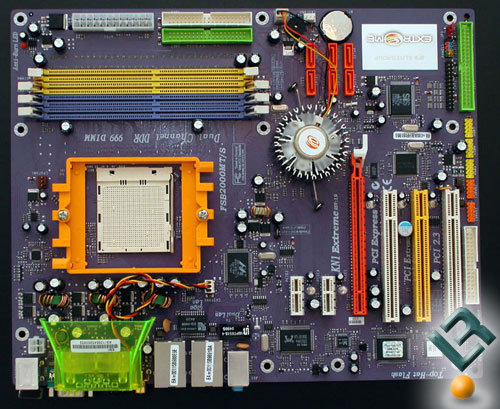
After removing the KN1 Extreme from its wrapping I was greatly impressed by the extremely clean and uncluttered layout of this board. While not the most aesthetically pleasing colors, the KN1 Extreme is definitely distinctive.

The KN1 Extreme supports AMD’s socket 939 processors, to include the newest X2 line. The area around the CPU is wide open and should have no problem housing larger heat sinks like the Thermalright XP-120 or Zalman CNPS-7700. The few capacitors in the area are well away from the CPU socket and very “low profile”.

Moving over to the memory sockets, the KN1 Extreme supports up to 4GB of 184 pin DDR1 memory in dual channel. I don’t care for the DIMM socket layout on this board with extreme memory from Mushkin, OCZ, and others needing high voltage, I would have preferred space between each memory module for cooling.
ECS curiously placed two of the three IDE ports here, but then left the third as well as the Floppy controller all the way across the board at the bottom. I had a hard time understanding the thought behind the placement of the ports on this board, an annoyance, but a fairly minor one. You should also notice the 24 pin power connector has four pins blocked off, this allows users to utilize a 20 pin power supply and plug it into the correct slots.

Moving down to the lower half of the board, ECS placed the USB and 1394 connectors, front panel connectors, as well as the SATA and third IDE port here in the corner. The KN1 Extreme allows up to 10 USB 2.0 devices to be connected.

The KN1 Extreme features 6 SATA connectors. The two at the top, separate from the rest support standard SATA (150) through the SIS 180 onboard chip. The four toward at bottom support SATA !! (3GB) through the board’s NVIDIA NF4 Ultra chipset. The KN1 Extreme supports RAID 0, 1, and 0+1. Another point worth mentioning are the SATA connectors themselves. Notice how each connector is surrounded by a sleeve? These sleeves prevent the SATA cables from working loose or being easily yanked out of place. A great feature I wish more board makers would pick up on.
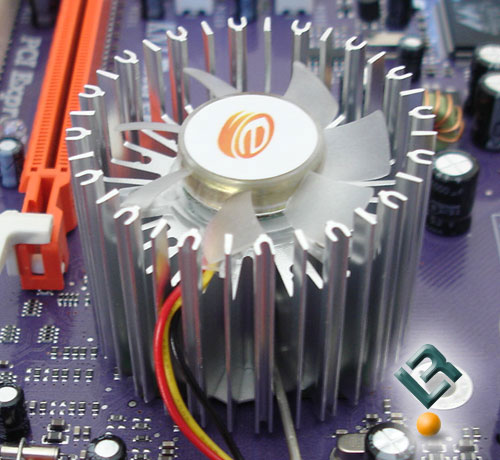
The chipset cooler itself might be the biggest I have ever seen, this actively cooled Aluminum behemoth stands about 2 inches above the board itself! Unlike the chipset cooler on the Chaintech board we looked at earlier, this active cooling solution does a great job of sapping heat from the relatively warm NF4 Ultra Chipset. I was a bit worried when installing my video card (The X850 XT has a large cooling system itself) but my worries were unfounded as there was plenty of clearance between the X16 PCI-E slot and the cooler itself.

Those of you familiar with ABIT’s O.T.E.S. cooling will recognize ECS’ attempt at cooling the boards capacitors and mosfets. Unlike the heavy duty (and hard to work with) O.T.E.S, ECS’ “Surround Cool” is a simple design that works very efficiently. They placed a simple 40mm fan within a very small plastic shroud on the boards upper left corner, where a great deal of heat tends to build up around the CPU, capacitors, mosfets, and PSU.

ECS claims the “Surround Cool” boosts the boards overclocking ability by up to 15%, whether that’s true or not is hard to gauge. What is beyond any doubt is the fact that this is a really nice idea and something that will undoubtedly help cool your system, leading to a healthier and happier computer.
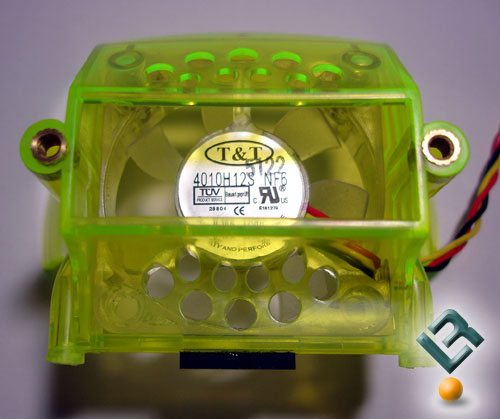
When it came to the PCI-E and PCI slots, ECS did it right, a single X16 slot for your high speed video card, a pair of X1 slots for other PCI-E add in cards, and three PCI slots. With still so many PCI add in cards on the market, I think three is a great number here. I still use a Creative Audigy 2 sound card, and a wireless card on my system, so having enough space for everything without cramping the cards is important.
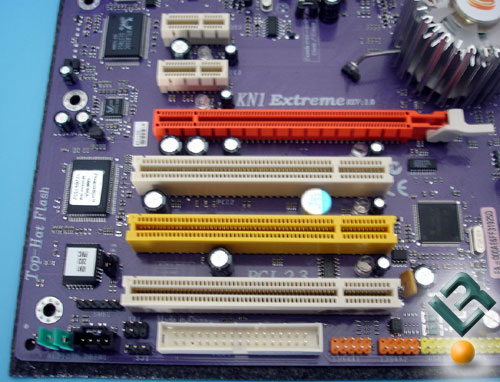
Something worth pointing out is how ECS silk screened their board, everything is clearly labeled. This is a great idea that I wish more companies would pick up on. While maybe not important to the experienced builder, these helpful labels are a blessing to a new system builder. Another point worth mentioning is the yellow PCI slot. This slot, labeled “Extreme” is supposed to provide the “cleanest” transfers, making it the ideal slot for your sound card.
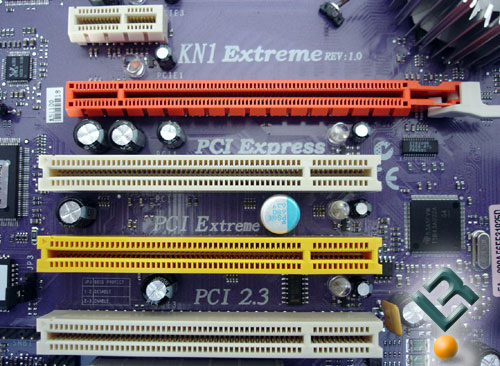
Here you see ECS’ “Anti Burn” LED. This LED lets the user know when the board is powered on, a warning not to add or remove memory modules from the board. I look at this basically as a simple power LED light. While on the topic of LEDs, the KN1 Extreme is covered with them! Each PCI, and PCI-E slot has its own LED which blinks brightly when the slot is empty or if a card is inserted incorrectly, otherwise the LED stays illuminated. While not the most annoying feature in the world, and I am sure a help for some troubleshooting, this feature will probably drive some with case windows absolutely mad.
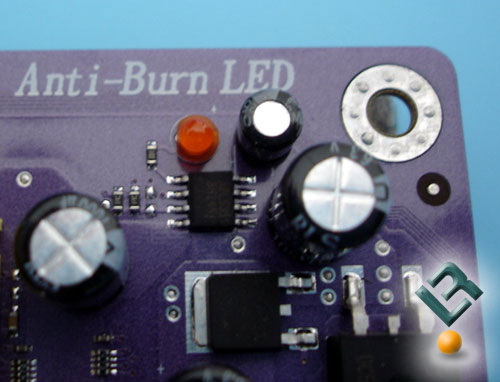
Next up is the BIOS chip. ECS developed their own solution to BIOS problems, a neat little system called the “BIOS Top-Hat”. Aside from the normal BIOS features, ECS placed a BIOS protection jumper next to the chip itself, that when activated, places the BIOS in a “Read Only” mode. This prevents virus or people who wish you ill (or just plain dummies) from destroying your boards sensitive BIOS chip.

But wait, theres more! ECS has also developed the “Top Hat”, something like a “BIOS Savior” which can restore your BIOS to its original working condition. This neat little device snaps over the top of your BIOS chip and can really save your rear end after a bad flash or virus.
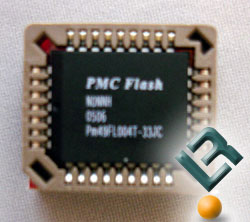
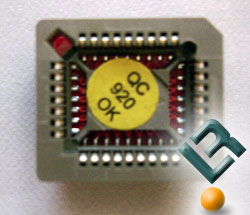
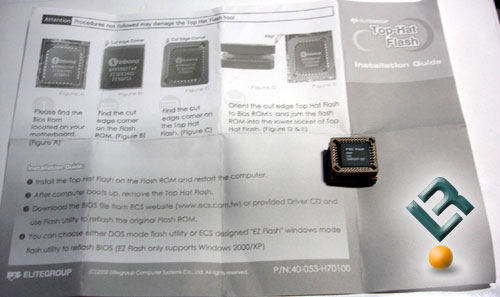
Make sure you follow the directions verbatim when using this device! If used improperly, it can destroy your BIOS chip, or even your board!
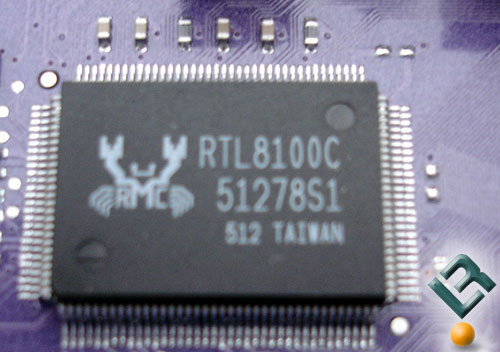
Onboard audio is suppled by way of Realtek’s ALC655 6-Channel audio CODEC. While not the worst solution, and more than adequate for the casual user/gamer, I would have preferred to see one of Realtek’s newer products used. Considering the board, package, and price as a whole, this is a very minor gripe.
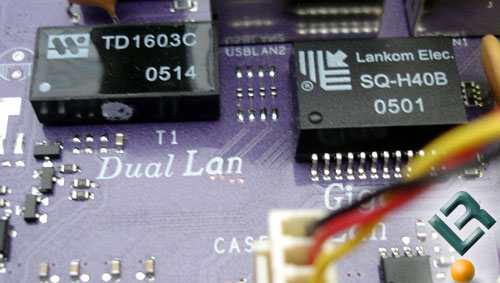
For Ethernet connectivity, ECS chose Realtek 8100C 10/100 Mbps Fast Ethernet controller and the Marvell 88E1111 Giga LAN PHY. The Realtek controller uses the PCI bus, while the Marvell is integrated into the chipset. Nothing earth shattering or different found here, though its very nice to have a dual ethernet solution.
Overall, I found the layout of the ECS KN1 Extreme to be excellent. I really don’t like the location of the third IDE connector or the Floppy connector, and I wish that ECS had spaced out their DIMM slots a bit more for cooling, but other than that that board is really nicely designed.

Comments are closed.